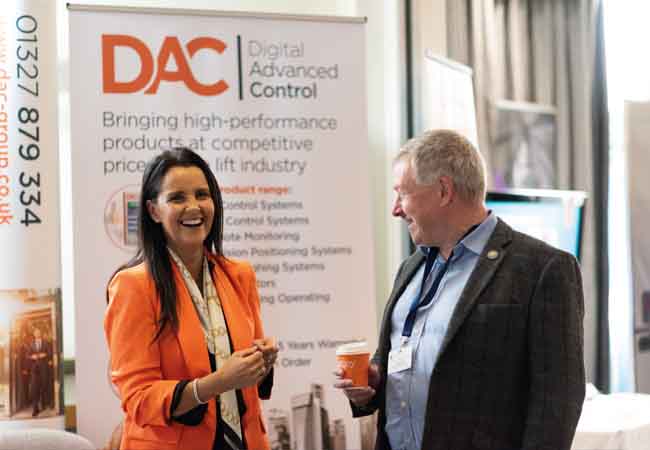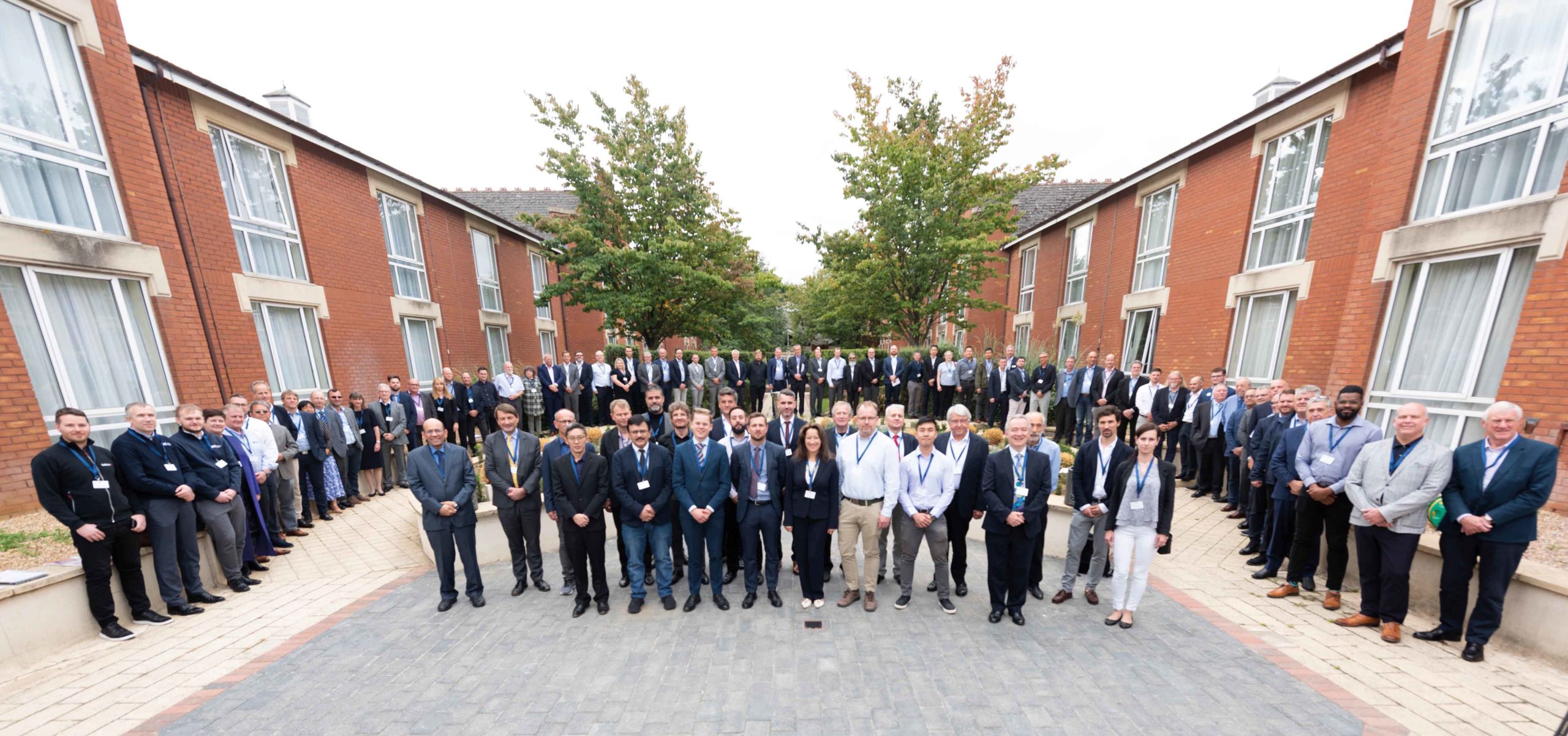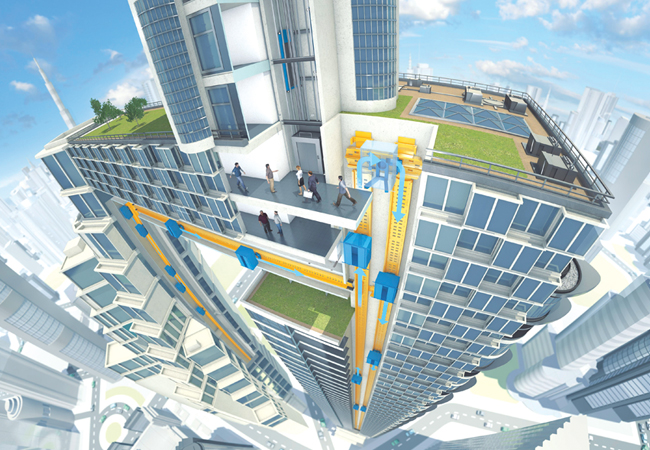
Looking back at the 2022 Lift & Escalator Technologies Symposium, I don’t think I recall seeing so many smiling faces at a lift conference. Post-pandemic, we all really appreciated the chance to meet in person again.
Old friendships were renewed and new ones formed, and – not forgetting the purpose of the symposium – we were presented with the latest industry research and developments from around the globe.
It is an exciting time to be in the sector and there are many new innovations; events such as the Lift & Escalator Symposium give us an excellent overview of what is ‘coming soon’.
This year, over the two days, we had 26 papers and a panel discussion, making it a packed and fast-moving programme. The 15-minute time slot for each speaker encouraged everyone to focus on the key innovations, leaving the written paper to speak to the details.
This format was popular with delegates; even the most committed conference delegate would prefer not to have a line-by-line exposition on the derivation of equations for traffic analysis, something I have been guilty of in the past!

In case of a recurrence of the pandemic, the event was planned to be hybrid, allowing people to join online or in person. The technicalities of running a Zoom call in a conference room are complex, but the technology worked, including conversations between online speakers and delegates in the room.
The conference was opened by Stefan Kaczmarczyk, who also chaired the first session on Engineering and energy. Matthew Appleby talked about the Generation and application of dynamic kinematics (without using any equations!) and Gabriela Roivainen addressed Dynamic simulations for lift health diagnosis.
Jaakko Kalliomaki took us back in time with his paper 1927 – the year that set the direction of traction lift engineering for a century. Adam Scott and I both addressed energy, Scott with his paper Energy-efficient buildings – Assessing the impact of lifts and escalators, while I spoke about Lift energy modelling for green building design. The need for our industry to consider the environmental impact of our design choices was one of the recurring themes at the conference.
“The need for our industry to consider the environmental impact of our designs was a recurring theme of the conference”
Session 2 was titled IoT and Technology, chaired by Philip Hoffer. Kenneth Ong, Paul Clements and Michele Guidotti all spoke on the internet of things (IoT), which was another recurring theme of the conference.
Ong’s paper was titled Setting standards on remote monitoring and diagnostic for lifts – a Singapore context, Clements’ was Exploring IoT applications for vertical transportation (VT) to tackle challenges in a modern world, and Guidotti’s was Lift IoT: Turning sensor data into value.
Miguel Castro reminded us about the importance of building information modelling (BIM) with his paper Lift industry and BIM: a long overdue adopted and typically overlooked project enabler.
Session 3, Traffic analysis and dispatching, was chaired by Graham Barker. For those of us heavily engaged in this topic, the symposium is where we pore over every paper and then discuss them enthusiastically in groups during the breaks; there was plenty to discuss in 2022.
Lutfi Al-Sharif presented on Enhancing the I-S-P method (inverse stops-passengers) using the Monte Carlo Simulation method, and Jonathan Beebe on Global dispatcher interface – initial prototype design. Aitor Arrieta discussed Design-Operation continuum methods for traffic master, Diana Andrei addressed Impact of the load-area bypass feature on passenger service level, and, finally, Gina Barney spoke to the Rated load and maximum available car area – A proposal to revise EN81-20, table 6.
Session 4, the final one of the first day, was titled Maintenance and was chaired by Nick Mellor. It picked up the IoT theme and related technologies in the context of maintenance and repair. Kaczmarczyk presented Vibration signature and the application of intelligent pattern recognition in detection and classification of damage in automatic power-operated lift doors, while Matti Lin spoke on System simulation for fault analysis of lift doors, and Rory Smith on The effect of artificial intelligence on service operations and service personnel.
Day two started with me chairing Session 5, Planning & Design. It began with invited speaker Marja-Liisa Siikonen presenting an overview of her new book, People flow in buildings. This major piece of work shares much of Siikonen’s extensive experience and is available on Amazon.
We then had papers from Janne Sorsa, on New evidence on lift passenger demand in high-rise office buildings, Kasinadh Karra, on the Component-based modular elevator, and Phil Pearson on The technical challenges involved in lifting 40-tonne trucks using rigid-chain technology in a confined space.
A highlight for many was Session 6, a panel discussion, chaired by Adam Scott titled Post-Covid: the impact on building and vertical transportation design. Neil Pennell gave us the thinking behind the British Council for Offices’ recent position paper as it seeks to reflect on the changing use of offices following the pandemic. More insights were provided by the other panellists – Len Halsey, Rory Smith and Jochem Wit – as they considered the implications of the pandemic on current requirements, and the uncertainty of what will happen in the future.
The final session was chaired by David Cooper and titled Safety. Daniel Meekin spoke on Investigation into the closing force of passenger/goods lift automatic power-operated doors and recommendations to reduce the risk of injury to lift users, and Mateusz Gizicki on The investigation of efficacy and fire propagation thwarting characteristics of a fire barrier in the lift industry applications. Returning to the IoT theme, Andrew Gorin spoke on IoT safety predictive monitoring of lift operations, shafts and buildings. Finally, there were papers from Qingping Guo, on Disinfection efficacy analysis of an ultraviolet-C (UVC) device for escalator handrails, and Nick Mellor, on Challenges to drafting a standard for the evacuation of disabled people using lifts.
I and co-chair Kaczmarczyk closed the event by thanking the Lift & Escalator Symposium Trust trustees, scientific committee, speakers and delegates for their efforts in making the event so successful. The full proceedings are available to download from www.liftsymposium.org. Papers and videos will also be added to www.liftescalatorlibrary.org, the charity’s fast-growing library of lift (elevator) and escalator technology research papers and documents.
The 14th Lift & Escalator Technologies Symposium will take place on 20-21 September 2023. Speakers are invited to submit abstracts at www.liftsymposium.org



